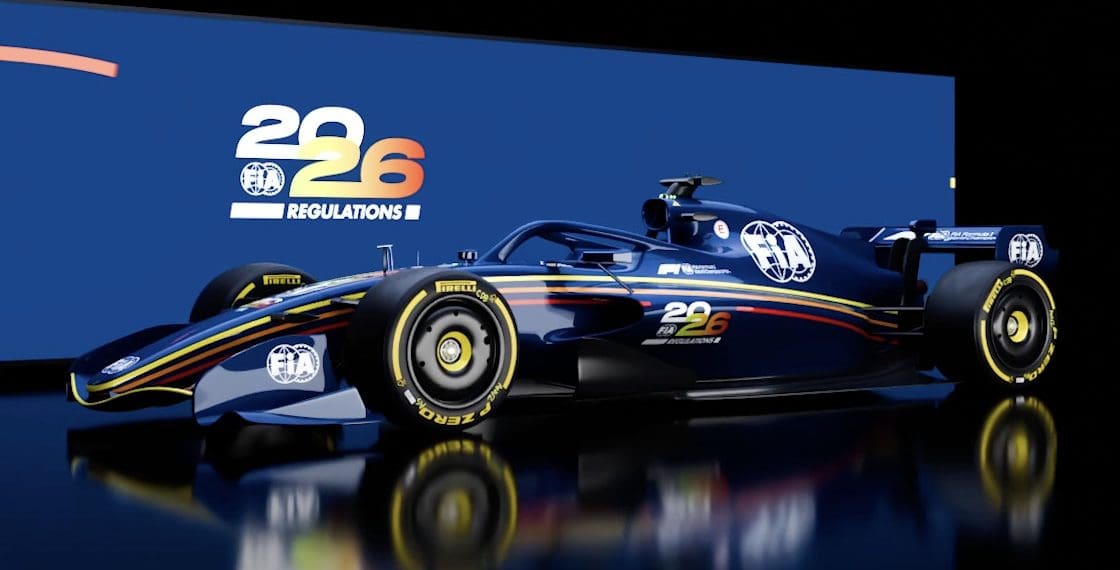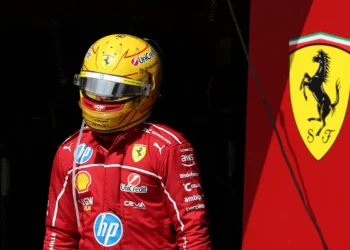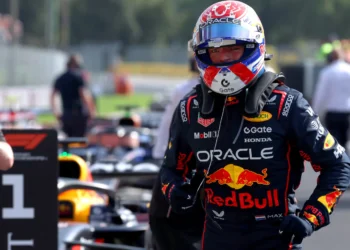Formula 1’s 2026 engine regulations were initially met with widespread panic and skepticism, with fears that cars would be starved of energy, forcing drivers to downshift on straights and turn races into economy runs. But as teams fine-tune their power units on the dyno, the reality is far less alarming—and potentially even more exciting.
With a radical shift to a 50/50 split between internal combustion power and battery energy, the next-generation power units will reshape racing dynamics, but they won’t cripple performance the way early simulations suggested.
So, what’s fact and what’s fiction? Let’s break down how F1’s 2026 engines are shaping up behind the scenes.
Early Fears: Were the Doomsday Scenarios Overblown?
When teams first tested 2026-style power units in their simulators, the results were shocking.
🔺 Downshifting at high speeds—Max Verstappen famously warned that cars would need to downshift mid-straight at Monza just to keep energy levels stable.
🔺 Drastic speed drop-offs—It was feared that cars would run out of battery long before reaching a corner, leading to bizarre slowdowns.
🔺 “Flat-out braking” for energy recovery—Teams were concerned that drivers would need to keep the engine revving even under braking, creating a completely unnatural feel.
These fears, however, were based on incomplete data. Early simulations used current F1 aerodynamics, failing to account for the drastically reduced drag and active aero systems coming in 2026.
Now that teams are working with more accurate models, the outlook has completely shifted.
The Truth About 2026: What We Can Really Expect
✅ Energy Deployment Will Be Managed, Not Depleted
- The biggest concern was battery depletion on long straights—but new rules will gradually taper off power, ensuring a smoother transition rather than a cliff-edge loss of energy.
- At tracks like Monza, where energy recovery is limited, teams won’t face sudden power cutoffs—instead, they will experience a gradual decrease over seven seconds, covering three-quarters of the straight at high power.
✅ F1 Cars Will Still Have Over 1,000 HP
- The new power balance (530 HP ICE / 470 HP battery) will still deliver roughly the same total power output as current turbo-hybrid engines.
- Acceleration could even be sharper, as electrical power delivers instant torque compared to the combustion engine’s gradual power curve.
✅ Active Aero Will Help Maintain Speed
- 2026 cars will feature drag-reducing aerodynamics, making it easier to maintain top speed without excessive power consumption.
- This eliminates the old fear that battery energy would drain too quickly, as the car requires less power to stay at high speeds.
✅ A More Tactical “Boost Button” Replaces DRS
- The Drag Reduction System (DRS) will be replaced with “Manual Override Mode,” effectively giving drivers a power boost button for overtaking.
- However, this comes with strategy risks—burn too much power for an overtake, and you might run out of battery later in the lap, leaving you vulnerable.
✅ Engines Will Sound Slightly Different, But Not Drastically
- The removal of the MGU-H means less back pressure, allowing the engine to produce a slightly richer sound.
- However, with less fuel burned per lap, the engine will be working less, leading to a small noise reduction overall.
- The end result? Similar to today’s engines—no major sound revolution.
How Will 2026 Cars Actually Drive?
While fears of bizarre energy-deprived racing have been debunked, there will be noticeable changes in driving style and energy management.
🔹 High-revving in corners for energy recovery—Engines will stay revved up even when braking, allowing for more battery harvesting.
🔹 Turbo spinning through corners—To reduce turbo lag, teams may keep the turbo running, even when drivers aren’t on full throttle.
🔹 Energy deployment vs. efficiency battle—Drivers and engineers must balance aggressive power use with long-term efficiency across a lap.
Final Verdict: Will 2026 Be a Step Forward or a Step Back?
💡 Step Forward: More efficient power, strategic overtaking, and refined battery use will make races more unpredictable and tactically engaging.
💡 Step Back: Some aspects, like revving through corners, may feel unnatural to drivers, and top speeds could be slightly lower on certain circuits.
While early criticism painted 2026 as an energy-starved nightmare, the reality is shaping up to be a fascinating new era of F1 racing—one where efficiency, racecraft, and strategic energy deployment will be more critical than ever before.













